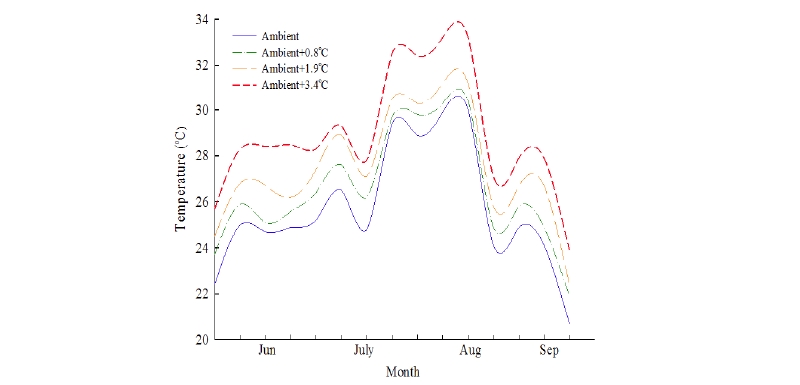Abstract
The present study aimed to investigate the growth response of rice and paddy weeds under varying temperatures created artificially in the phytotron under field condition. Rice (Oryza sativa L.), three annual (Ludwigia prostrata, Monochoria vaginalis, and Echinochloa oryzicola) and three perennial (Scirpus planiculmis, Eleocharis kuroguwai, and Sagittaria sagittifolia) paddy weeds were grown under different temperature regimes (ambient, ambient+0.8°C, ambient+1.9°C, and ambient+3.4°C). It was observed that the growth of both rice and paddy weed species increased with the elevation of temperature. However, the growth of weeds was much greater than that of rice under elevated temperature. The shoot dry weight of rice was 8.9%, 13.1%, and 30.4% greater at the ambient+0.8, +1.9 and +3.4℃, respectively compared to the ambient temperature. Among the paddy weed species L. prostrate exhibited the most significant increased level of both dry weight and leaf area presenting 211.8% and 214.3% higher, respectively at the ambient+3.4℃ than that of the ambient temperature. Growth of E. oryzicola and M. vaginalis were slightly higher compared to the growth of rice under elevated temperature. The growth of perennial weed species of S. sagittifolia exhibited 124.8% higher dry weight at the ambient+3.4℃ than at the ambient. Our findings suggest that elevation temperatures might provide an even greater competitive advantage to weeds with concomitant negative effects on rice production.
Figures & Tables

Fig. 1. Monthly temperatures in the four phytotrons during the rice and weed species growing season.


